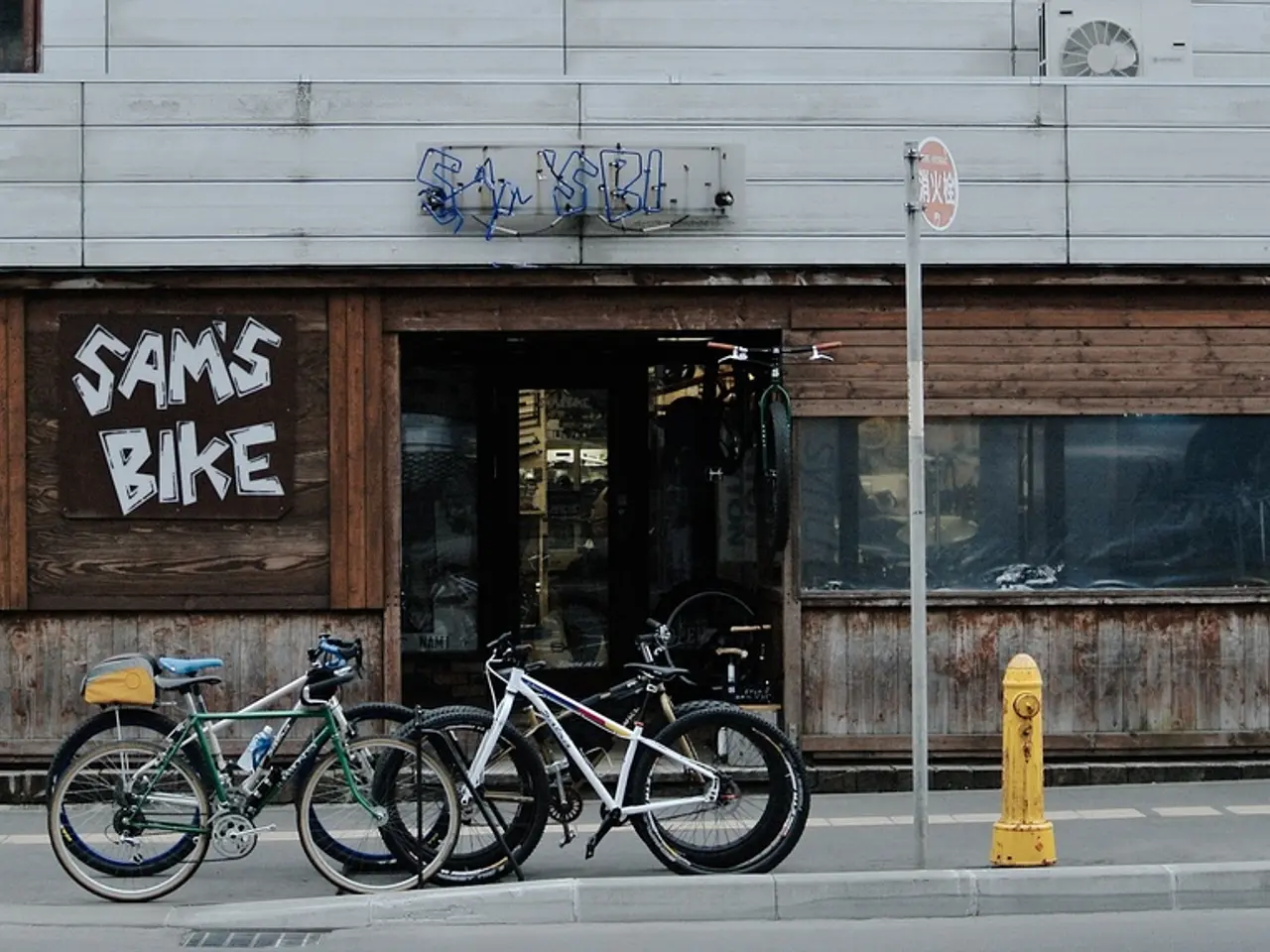instructions for avoiding lithium-ion battery fires and ensuring safety
Lithium-ion batteries, found in a wide range of household items, can pose a fire risk if not handled properly. These batteries are used in appliances such as laptops, mobile phones, tablets, power banks, e-cigarettes, electric shavers, power tools, domestic appliances, e-scooters, e-bikes, some smoke alarms, digital cameras, television remotes, and gaming controllers.
To ensure the safety of your home, follow these guidelines:
Charging Your Devices Safely
- Keep devices out of direct sunlight and heat sources. Avoid charging devices in direct sunlight or near heat sources.
- Select an appropriate location for charging. Choose a room where a fire can't easily spread, and avoid charging near an exit or in a room without a working smoke alarm.
- Be cautious when buying second-hand lithium-ion batteries. Be aware of the risks associated with second-hand batteries and products containing lithium-ion batteries, and purchase them from the original manufacturer or an experienced professional.
- Use the appropriate charger. Only use chargers supplied with the device or third-party chargers compatible with the battery specifications that are certified with the Australian Standards Regulatory Compliance Mark.
- Do not leave charging devices unattended in your home. Remove them from charge as soon as the battery is full.
Preventing Lithium-Ion Fires
Lithium-ion fires can occur due to overcharging, using an incorrect charging cable, exposing the battery to extreme heat sources, water, or humidity, physically damaging the battery, leaving the battery in fresh or salt water for a long time, causing corrosion within the battery, lithium-ion battery system faults, cell malfunctions, short-circuiting, or manufacturing defects.
- In case of a lithium-ion battery fire, evacuate the area and call 000 for a fire brigade. If smoke or flames start emitting from a battery or device, do not touch the device. Evacuate the area, close doors as you leave (if safe to do so), and call 000 for a fire brigade.
- If a lithium-ion battery is leaking, use gloves or other hand protection. Touching a leaking lithium-ion battery with bare hands can cause severe burns.
- Lithium-ion fires require different extinguishing methods. Do not attempt to extinguish a lithium-ion fire yourself. Instead, immediately turn off the power, unplug the device, and move it outside away from anything that can catch fire.
Disposing of Lithium-Ion Batteries Safely
To safely dispose of used lithium-ion batteries in Australia, do not throw them in regular rubbish or recycling bins because they pose a fire risk during waste collection and processing. Instead, take them to designated collection points such as:
- Battery recycling drop-off points like B-cycle
- Community Recycling Centres
- Household Chemical CleanOut events
For handheld lithium-ion batteries from small electronics, ensure battery terminals are covered with clear adhesive tape to prevent short circuits and possible fires. For e-cigarettes and disposable vapes containing lithium batteries, use specialized collection points or Household Chemical CleanOut events.
For larger or industrial lithium-ion batteries (e.g., in forklifts or e-mobility devices), contact your local waste authority or seek certified battery recyclers who can safely handle and recycle these according to Australian regulations.
Key points for safe disposal in Australia:
- Never dispose of lithium-ion batteries in household waste or standard recycling bins.
- Use designated battery recycling drop-off points or hazardous waste collection events.
- Cover terminals with tape on small batteries to prevent fire.
- Check with local authorities or retailers for proper recycling options.
- Larger or industrial batteries require professional handling by certified recyclers.
This approach aligns with safety advice from NSW Fair Trading and emerging national initiatives promoting sustainable lithium-ion battery recycling. Regularly check and maintain your smoke alarms to ensure they are functioning correctly. Never overcharge a device, and consider using a powerpoint timer. Dispose of old or damaged lithium-ion batteries safely using B-cycle or your local council's disposal facilities.
In the realm of health-and-wellness and science, it is essential to be aware of the potential fire hazards associated with lithium-ion batteries used in numerous devices, such as e-cigarettes, electric shavers, and power banks. To ensure your home's safety, follow guidelines for proper charging, preventing fires, and safely disposing of used lithium-ion batteries. In technology, the advancement of electric appliances has led to the increased usage of lithium-ion batteries, making it crucial for consumers to understand safe handling practices for these power sources.




